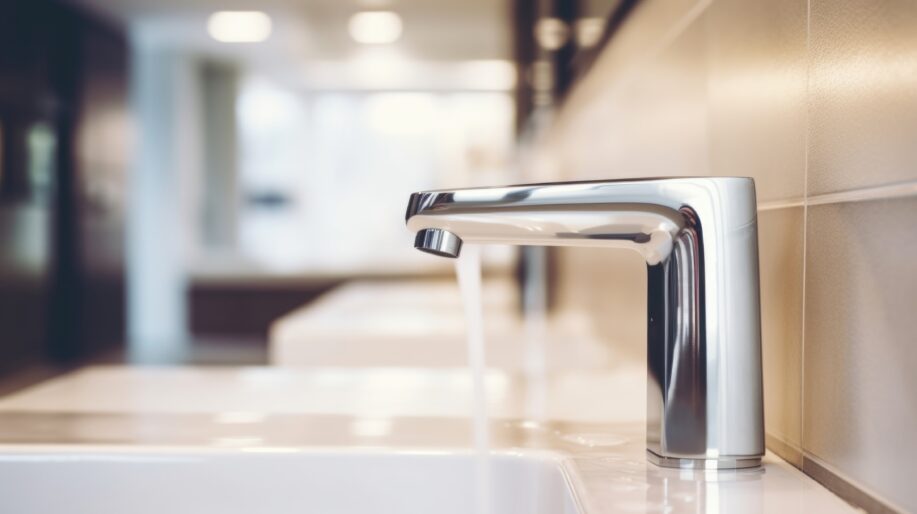Smart restroom technology is now well into its early adoption phase, and more and more facilities are leaning into the opportunity to leverage data to improve their customer experience and optimize their cleaning program. As each new customer ultimately achieves successful deployment, additional facilities in various segments are buying into the value proposition.
RELATED: Navigating the new norm
At the same time, based on how each facility and segment is using the technology and applying the data, equipment manufacturers and technology providers are gleaning important insights into key areas of restless discontent impacting facilities. Those insights are informing a number of innovations, business decisions, and trends that will drive higher-stakes customer benefits in the coming three to five years. There are a few themes that are gaining traction in the marketplace:
Smart will become smarter
The greatest output of smart restroom technology is the sheer breadth and depth of data it generates. This data helps facilities pinpoint maintenance inefficiencies, recognize product waste, understand traffic patterns, mitigate product outages, and otherwise elevate and optimize cleaning and maintenance operations.
Generative AI’s greatest output is insight into data. In the case of smart restroom solutions, GenAI will make them even smarter by delivering more accurate, robust, and actionable insights faster than any human or any existing technology ever could. In so doing, GenAI will help the next generation of smart buildings achieve unprecedented adaptability, predictiveness, and responsiveness.
According to research, the global AI market grew from $428 billion in 2022 to $515 billion in 2023. And it is expected to reach nearly $2 trillion by 2030. These numbers indicate that this is a transformative, disruptive technology that businesses of all shapes and sizes will need to leverage in the near future to remain competitive. For their part, smart restroom suppliers are already in deep learning mode, and customers will begin to reap the rewards of this learning in the not-too-distant future.
Suppliers will bundle
Product and service bundling is a well-known approach to reducing purchasing complexity and improving the customer journey. Cable companies add on internet and mobile plans, car repair shops offer service packages like tire rotation with an oil change, and even fast-food restaurants offer meal deals. Now, bundling is making its way into the smart restroom sector.
Already, several major technology innovators have forged formal partnerships with leading smart dispenser manufacturers. This preferred partner approach gives customers the option of bundling the three most vital components of a smart restroom solution – the network, the smart dispensers, and the software. This simplifies the purchasing process for facilities as well as the implementation, deployment, and day-to-day management of the solution.
Whether it’s through partnerships, consolidation, mergers, or acquisitions, bundling will become much more prevalent among smart building suppliers as they work to drive the adoption of their solutions.
Everything will be simplified
Technology has a way of being more complicated than it needs to be, often compromising being user-friendly in its quest to offer the most choice or the most features and functions. As an example, a 2019 article on this topic made mention of a cell phone with 16 cameras.
It shouldn’t come as a surprise, then, that smart restroom solutions aren’t immune from this over-complication. As already noted, the ecosystem itself can feel overwhelming. But the design and installation process, too, can seem overly elaborate, the number of needed components can look excessive, and many solutions offer what could be viewed as undervalued feature sets. There’s ample room and a clear need for simplification.
Bundling and GenAI are part and parcel of simplifying smart restroom solutions and their adoption. Bundling, by bringing together preferred suppliers and solutions to make the technology easier to adopt and GenAI, by interpreting solution data and quickly identifying opportunities for improved customer ROI.
The industry is also pursuing a number of additional paths to simplification. One avenue is optimizing inter-operability, which is what makes a solution compatible with and able to exchange data with other smart building systems, like HVAC, lighting, and security. It’s the software equivalent of playing nice in the sandbox. Another is eliminating unnecessary, undervalued, and unused features so they don’t interfere with or delay access to more meaningful features. Yet another is assigning dedicated on-site customer success managers who will run interference and provide ongoing guidance and support from solution design well into deployment.
As technology continues to evolve, the future looks bright for smart restroom solutions.
John Strom is Vice President and General Manager of Innovation at GP PRO, a division of Georgia-Pacific. In this position, John leads the team responsible for all aspects of the company’s KOLO™ Smart Monitoring System, an award-winning open platform smart restroom solution. To learn more about GP PRO and its smart restroom solutions, visit www.gppro.com.








